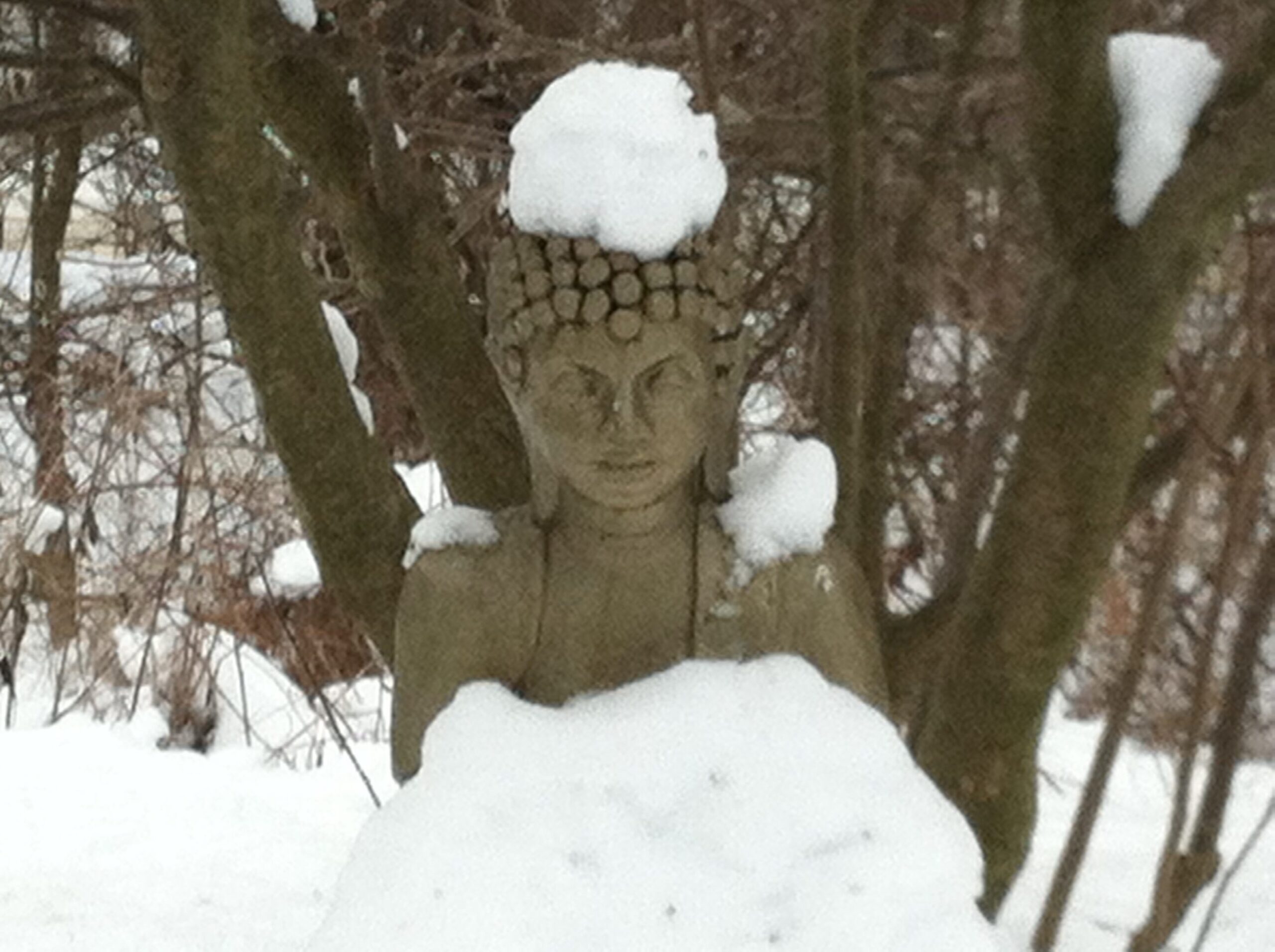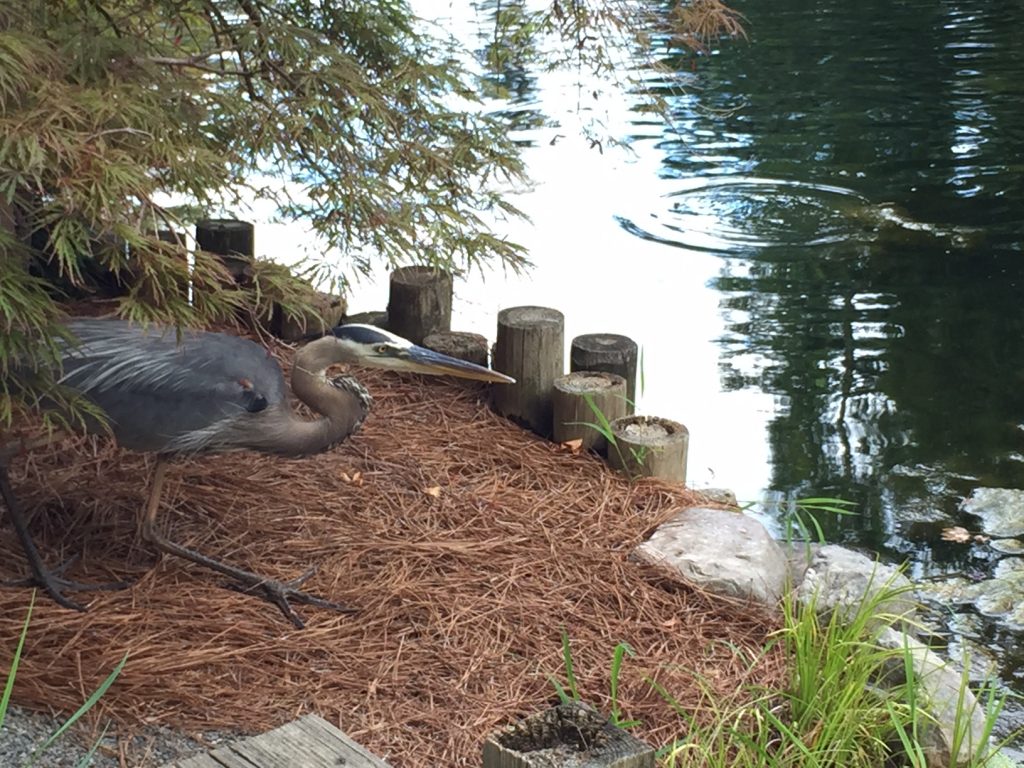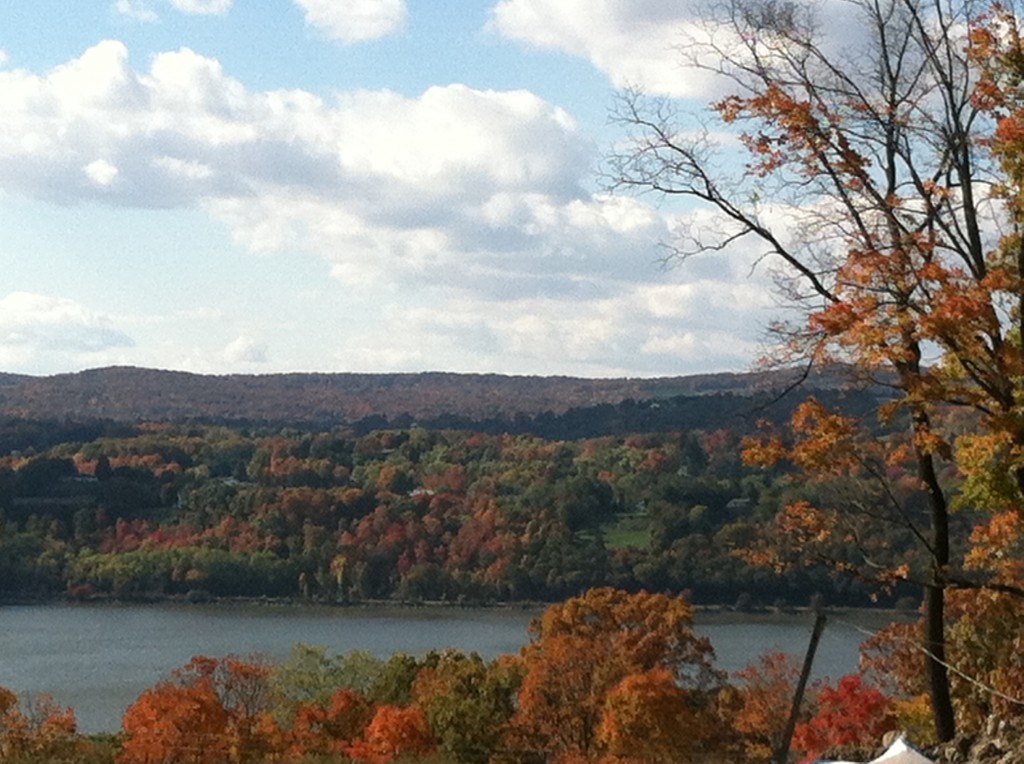Before I get started on the Gampopa Ornament of Precious Liberation class notes, here’s a short presentation I gave a couple of weeks ago at an interfaith prayer service in Richmond, Virginia. Organized by Chaplain David Curtis at Westminster Canterbury Retirement Community, the service’s theme was how peace can be lived in different areas of life: self, home, community, and the world. While Buddhism would have been a natural fit for peace within self, I addressed how it views the possibility of peace in the world.
Tag Archives: karma
37 practices: verse 14
14. To repay slander with love / how to use disgrace on the path
If someone slanders me and spreads the word, / Maligning me throughout the universe,
To pay them back I fill my heart with love, / Extolling their good traits and character:
This is the way a bodhisattva trains.
verse 14 audio (click where the “play” button should be)
Once again, as in verses 12 and 13, Dilgo Khyentse begins his commentary by reminding us of the law of karma. “If someone defames and disgraces you, that is simply the result of having criticized and dishonored others in the past, especially bodhisattvas. Instead of feeling angry with such people you should feel grateful to them for giving you the opportunity to purify your past misdeeds.” This is a go-to remedy for the impulse to anger and retaliation when any kind of adversity strikes.
This verse corresponds to the worldly concern of fame versus disgrace. As long as we care what others think of us, we will be sensitive about our reputation and reflexively defend ourselves. Dilgo Khyentse tells two stories of practitioners who, rather than defend themselves publicly, took blame for negative actions they didn’t commit. In both cases the situation was eventually resolved, though we may not be able to count on that; the practitioners remained calm and matter of fact without knowing the outcome.
37 practices: verse 8
8. To refrain from harm at all costs
The suf-fer-ings of the three lower realms, / These states of mind so difficult to bear,
According to the teachings of the Sage / Are the result of actions that do harm.
Therefore, even with my own life at stake, / From harmful actions always to refrain:
This is the way a bodhisattva trains.
Verse 8 audio above. Audio for verses 8-10, the three levels of practice, is here.
Now that we have, in verses 1-7, begun to disengage ourselves from samsaric habits and gathered the support we need, we are ready to enter the actual path of awakening, which consists of three levels of motivation and practice.
The first level begins when we simply recognize how much we suffer because of our habitual emotional reactivity — the three poisons of desire, anger, and ignorance (the latter most easily understood as the solidification of our ephemeral, illusory experiences into fixed perceptions, opinions, and judgments). In the four noble truths, the Buddha taught that our experience is permeated with various types of suffering, that this suffering has a cause (the three poisons), and that by removing the cause it can be brought to an end. Once we truly understand this, we will automatically be motivated to apply the antidote.
In which I am pursued by a hungry blue heron
In recent years, this heron (or maybe several, but I’ve always seen just one at a time) has regularly hung out by the koi pond in Richmond’s Lewis Ginter Botanical Garden. Visitors pay their quarter and toss in a handful of pellets, the fish surface for their breakfast, et voila: the heron breakfasts, too. Herons are usually quite shy, but this one is now savvy enough to stay put when a visitor appears with pellets, and today it got quite close and followed me around. I cleverly threw my pellets on the opposite side of the path from where the heron was poised to strike, so it had to go back and forth, which is a slow process for a heron on foot, and the only breakfast served while I was there was to the koi.
As a Buddhist, I feel I can’t prefer fish over herons or vice versa–they all have an equal desire to live and an equal need to sustain themselves. But I always try to err on the side of not contributing to anyone’s immediate peril.
Where Mahayana and Vajrayana Meet
 PTC Monastery was graced with a visit last Saturday, September 15, from Master Hai Tao, a master of Mahayana Buddhism from Taiwan. He came to meet Lama Norlha Rinpoche and to see the Maitreya Center, our new monastery building currently under construction.
PTC Monastery was graced with a visit last Saturday, September 15, from Master Hai Tao, a master of Mahayana Buddhism from Taiwan. He came to meet Lama Norlha Rinpoche and to see the Maitreya Center, our new monastery building currently under construction.
The Maitreya Center is unique in that it incorporates both a traditional Vajrayana and a traditional Mahayana shrine room. The construction of the building’s exterior is nearly complete, while the inside is framed out just enough that the dimensions of the respective shrine rooms are visible. A shrine had been set up in each of these spaces, overflowing with offerings and adorned with pictures of Buddhas. Master Hai Tao and his entourage toured the Maitreya Center with Rinpoche and paid homage at each of the shrines. It was a very touching moment of pure devotion shared across cultures and traditions.
In a Nutshell
Three-year retreat, year one.
“The three realms of existence are as fleeting as autumn clouds.” ~From The Extensive Sport Sutra, quoted in The Jewel Ornament of Liberation by Gampopa.
A few years ago, when I lived in rural New Hampshire, I was taking a walk on the most gloriously perfect early fall day you can imagine, just feeling on top of the world, la la la la la, when I passed a neighbor’s pig pen. Mr. and Mrs. Pig were friends of mine, and I always stopped to say a few mani’s if they were out and about. But today Mrs. Pig was standing there all alone looking very, very upset. Where is Mr. Pig? As I passed the driveway, why, there was Mr. Pig—laid out on the asphalt, freshly slaughtered and about to be hung up for bacon. Mrs. Pig was next on the list.
Lama Norlha once asked his students, “If you don’t practice now, when will you do it? When you’re a cow grazing in a field?” He always said the best advice he got from his first root lama in Tibet was, “Always remember impermanence.”
A Western teacher I studied Tibetan with back in the 1980s used to say, “We already fell off the building. We’re hurtling toward the ground.”
OK, our time on earth is limited and could end at any moment without warning. But while we’re still here, aka today, how to find the time to practice?
Circa 1980, the first personal computers were behemoths with one font, no graphics, no color, and no mouse, and the most popular game was Pac-Man. An innovative computer game came out based on the 1960s TV show The Prisoner about a renegade British secret agent mysteriously exiled to “the Village,” a relentlessly cheerful island designed to drive a sophisticated Londoner mad. In the computer game, the player typed in words and used the cursor keys to move around in order to solve a series of more and more complex and seemingly illogical puzzles and eventually “escape”—something Number Six, the hero of The Prisoner, never managed to do.
I remember clearly the moment we finally arrived at the solution to the last puzzle: “Unplug the computer.” So simple…yet we never thought of it on our own!
OK, so maybe you need your computer, but what if you just turned it off and meditated for a half hour, or even 15 minutes? Or, don’t turn it off—just walk away and meditate for ten minutes, or five, and come right back.
Or, stay at the computer and just swivel your chair around and let thoughts go for a few minutes. Or, don’t even turn around—just lower your gaze and focus on your breath. Don’t try to change it, just notice it, while gently letting go of any thoughts that arise. You can even look like you’re working!
If you don’t have five minutes, and I’ve been in that situation many times myself, maybe you could follow Thich Nhat Hanh’s advice and take three slow, mindful breaths, relaxing and letting all thoughts go just for that short amount of time.
If you don’t even have time for three breaths, then Mingyur Rinpoche has a suggestion: just rest your mind for ONE SECOND! He says we can do this any time, anywhere. Once while teaching meditation in New York City he stopped and talked to himself for a moment to see if it’s possible to meditate while conversing. He reported to his highly amused audience that yes, it is! In the one-second technique, you just focus for that second on whatever you’re doing; let all thoughts and feelings go, and be present where you are, vividly—feeling tactile sensations, hearing sounds, noticing your breath, or relaxing into the vastness of space.
Many years ago during a teaching at PTC, a student asked the great meditation master Dorje Chang Kalu Rinpoche how often we should meditate. Without hesitating, Rinpoche replied, “Whenever you realize you’re not meditating, then you should meditate.”
Listen! The banshee is already wailing on the mountainside! There’s no other time than now.
Raccoon Story
August 2008
For the past few weeks, we’ve been entertained almost every day by a family of raccoons: a mother and five cubs.
The cubs are SO cute! They climb the chicken wire enclosure where the guinea hens used to live, engage in wrestling matches, and wreak general, adorable havoc on the property, as mom looks on to make sure they stay safe. Early one morning one of the cubs picked a green tomato (our only food crop, aside from a few herbs), and one of the retreatants, who happened to be outdoors just before the 6:00 a.m. chanting, hissed at it to discourage further destruction. It hissed back nonchalantly, and carried on.
Four Thoughts That Turn The Mind
At our meditation study and practice meetings in New Hampshire, we often talked about the Four Thoughts, also known as the Four Reminders. Their full title is the Four Thoughts That Turn the Mind, i.e., redirect it from worldly to spiritual concerns.
Lama Norlha Rinpoche has always placed a great deal of emphasis on really getting to know these thoughts; he says it is like building the foundation of your house. If you haven’t really internalized these thoughts, your Dharma practice will never be truly stable. (Just before we entered the three-year retreat, he gave a teaching on these same four thoughts.) Whenever you find yourself wavering about whether to do your meditation or go make some popcorn and put in a dvd, you can always come back to the Four Thoughts to remind yourself why the dvd isn’t going to help you when things go wrong.
Informally expressed, the Four Thoughts are:
The Precious Human Existence: We need to appreciate what a rare opportunity we have in this life; we have everything we need in order to free ourselves from the otherwise endless cycle of confusion and suffering. We are not gravely impaired or imprisoned in a situation that leaves us no leisure; and we have access to the Buddha’s teachings and to living teachers who can help us apply them. Not everyone has this situation, and we might not have it ourselves the next time around; we need to put it to work for us.
Impermanence and Death: Darn, there’s that D-word again. Why do Buddhists have to be so morbid? Because it’s the truth: we don’t know how long this opportunity is going to last. Even if we don’t die tomorrow, something could happen that could prevent us from practicing. It could happen any minute (wait, is that the phone?)—so we have to make use of our time right now!
Karma, Cause and Result: This one is very complicated; even if I understood it, I wouldn’t try to explain it! But Jamgon Kongtrul, the great nineteenth-century Kagyu teacher, says in The Lamp of the Definitive Meaning (aka, The Torch of Certainty, translated by Judith Hanson) that anyone can understand the fundamental underlying law of karma: virtuous-positive-helpful actions lead to future happiness, and unvirtuous-negative-harmful actions lead to future suffering. Part of Dharma practice is to conduct ourselves in the world in such a way that we don’t create more negative conditions for ourselves or others. This isn’t a moralistic edict, it’s completely practical: we are looking out for our own future, which may kick in to some extent in this lifetime, but really takes hold when we die and as we move on to our next life. As Lama Norlha Rinpoche often advises: don’t set yourself up for regrets on your deathbed, because there’s nothing you can do about them then.
The Disadvantages of Samsara: Samsara is the Sanskrit word (Tibetan kor.wa) for the endless cycle of suffering that goes round and round from lifetime to lifetime. The Buddha taught that it’s all suffering, every atom of it. Even what feels like fun is suffering in disguise: if it doesn’t make you fat or aggravate your asthma, at best it has to end; and if you look at anything in life closely enough, you see that it came to you via a trail of others’ pain and destruction, especially if you believe, as Buddhists do, that even tiny animals count. (How many insects died for your bowl of brown rice or strawberries?)
For a more classical presentation and more detail about the Four Thoughts, some good books are The Torch of Certainty by Jamgon Kongtrul, The Words of My Perfect Teacher by Patrul Rinpoche, and two books by Kalu Rinpoche: The Writings of Kalu Rinpoche (his first book, available from PTC Monastery) and Foundations of Tibetan Buddhism.


